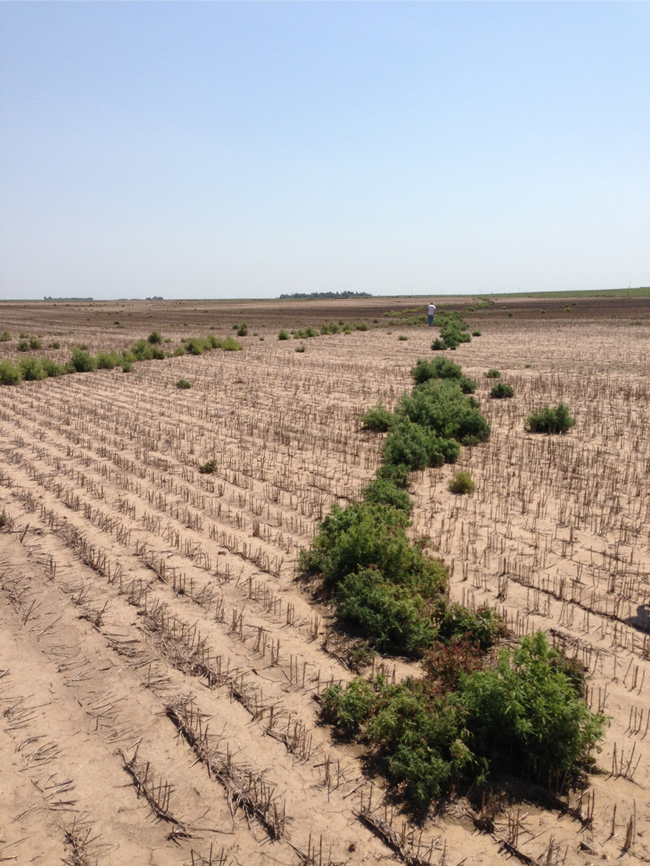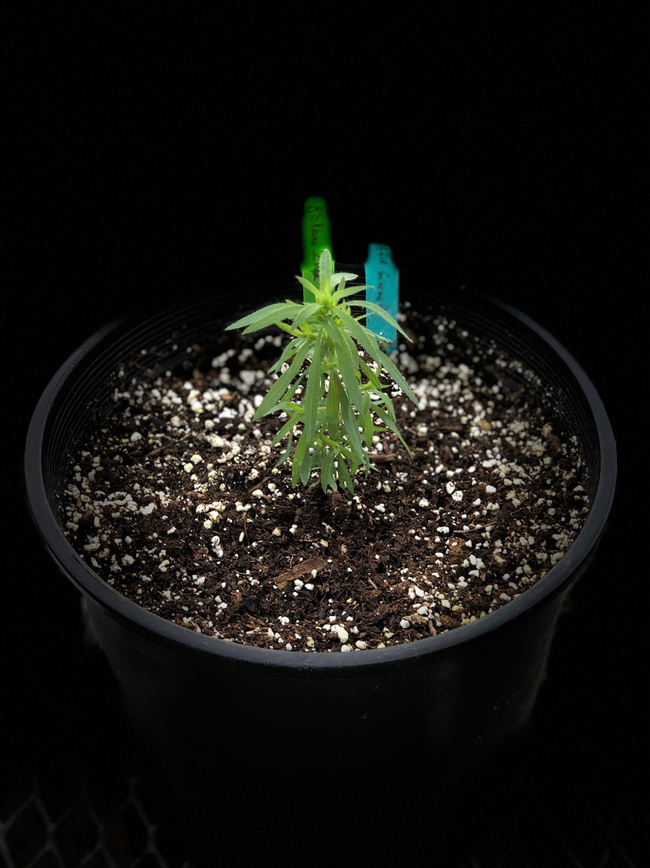From the Western IPM Center November 2019 newsletter...
Looking for Answers as Kochia Rolls Across the West

“It's salt tolerant, heat tolerant, cold tolerant,” said Kent Davis, a crop consultant with Crop Quest in Colorado. “I want to kill the damn stuff, there's no question about it, but you have to admire it at the same time.”
Davis spoke at a recent meeting of a kochia work group, funded by the Western IPM Center, where some 50 researchers, growers, herbicide industry representatives and graduate students focused on all the challenges in managing kochia. In addition to its hardiness, as a tumbleweed, kochia spreads quickly and exchanges genetic material with other strains readily. It's also developed resistance to multiple herbicides and chemical pesticide manufactures struggle to, as one company representative put it, “stay two modes of action ahead of kochia.”
The work group meeting in Denver took a high-level look at the state of kochia control and the research steps needed to continue to manage it.
“We want to look broadly at the biology and ecology of kochia, at integrated management and herbicide resistance, and we're including sessions on education and social science since that will have to be part of the solution,” explained Todd Gaines, a weed scientist at Colorado State University and project director of the work group.
The value of the work group quickly became obvious as researchers from different universities from Oregon to Texas talked. Noting that they all do resistance studies slightly differently, they agreed that developing a unified protocol would be useful, and they identified priorities for future research.
“Some of this is low-hanging fruit,” Gaines said. “A common protocol is a good example of that. We also want to see who is doing what and see if there are some natural divisions of labor we can identify going forward.”
Some researchers are examining the seed bank, looking for ways to keep kochia from germinating, or forcing its germination to give growers a good window to control it with herbicides. Kochia is a quick-germinating weed, with 95 percent of its seeds germinating within two years. That's encouraging for techniques based on seed-bank reductions, but it has a caveat.

Others are looking at genetic solutions for managing kochia, which recently has had its genome mapped. Philip Westra, a weed scientist at Colorado State University, mused about looking for genetic modifications to the plant's abscission layer, which allows the weed to break off and blow around – in effect untumbling the tumbleweed.
Other researchers surveyed growers to see how they were thinking about and managing kochia, and some of those statistics weren't encouraging. Half the responding growers thought they had herbicide-resistant kochia in their fields. Two-thirds of the respondents said they were doing a good job managing kochia and resistance, but only 30 percent thought their neighbors were doing a good job.
Other data were more encouraging. Making a presentation on integrated management of kochia, Nevin Lawrence at the University of Nebraska-Scottsbluff, showed that while worst-case kochia infestations could deposit 12,300 seeds in a square meter, a combination of tactics to control kochia, including tillage, cover crops, and targeted crop and herbicide rotations, brought that number down to 352 seeds per square meter.
“It won't be one answer,” he said. “It's going to take an integrated approach.”
The research priorities established by the work group reflect that. They are:
- Basic seed biology – coordinated, multi-state, long term seed bank dynamics; improved seed storage for reference lines; stimulating synchronized germination
- Standard resistance testing protocol and rating system, standard reference lines available for all to use
- Integrated Weed Management modeling for a kochia management decision-support tool
- Coordinated communication material; survey of current practices for scope of problem and barriers; initial area wide management groups
Kochia as a Solution?
Not everyone at the meeting had it in for kochia. Kevin Dorn, a researcher working on sugar beets for the U.S. Department of Agriculture's Agricultural Research Service, sees kochia as a potential future solution, not just a problem.
“Sugar beets are very disease-sensitive,” he explained. “You'll see fields of sugar beets stunted from disease with healthy kochia growing right next to it. Because sugar beets and kochia are in the same family genetically, it may be possible to take some of the traits that make kochia such a difficult weed to manage and use them to improve the agricultural crop. That's not going to happen soon, but because the genome has been mapped, it's something we can start to look at.”
A salt-tolerant, heat-tolerant, cold-tolerant and disease-tolerant weed is a big problem, however, those same attributes in a sugar beet would be sweet indeed.